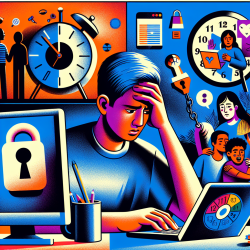Unlocking the Secrets of the Special Education Process Handbook
The Special Education Process Handbook is an essential guide for understanding how students with disabilities in the District of Columbia are provided with a Free Appropriate Public Education (FAPE) under the Individuals with Disabilities Education Act (IDEA). The Office of the State Superintendent of Education (OSSE) has developed this comprehensive handbook to support Local Education Agencies (LEAs) in implementing special education requirements effectively.
Understanding FAPE
FAPE ensures that students with disabilities receive special education and related services at no cost to the family. These services must meet the standards of the IDEA and are delivered in conformity with an Individualized Education Program (IEP). FAPE is available to all students with disabilities from ages 3 to 22 in the District of Columbia, including those who are suspended, expelled, or highly mobile.
The Child Find Mandate
Child Find is a critical component of the special education process, requiring LEAs to identify, locate, and evaluate all children with disabilities who need special education services. This includes public awareness activities to inform the community about available services and how to request them. LEAs must ensure that no child in need of special education is overlooked.
Initial Evaluation and Eligibility
The process begins with a referral, which can be made by parents, educators, or other professionals who suspect a child has a disability. The LEA must then conduct an initial evaluation to determine the child's eligibility for special education services. This evaluation includes gathering existing data, conducting assessments, and considering input from parents and professionals.
Developing the IEP
Once eligibility is determined, an IEP team, including the child's parents, educators, and specialists, convenes to develop an IEP tailored to the student's unique needs. The IEP outlines the special education services, accommodations, and goals for the student, ensuring they have access to the general education curriculum and can make progress.
Placement and Least Restrictive Environment
LEAs must ensure that students with disabilities are educated in the least restrictive environment possible. This means that, to the maximum extent appropriate, students should be educated with their non-disabled peers. The IEP team must consider a continuum of placement options to meet the student's needs.
Procedural Safeguards and Dispute Resolution
Parents have specific rights under IDEA, known as procedural safeguards, to ensure their involvement in the special education process. If disputes arise, parents and LEAs can use mediation, state complaints, or due process hearings to resolve issues related to a child's special education services.
For more information, please follow this link.










